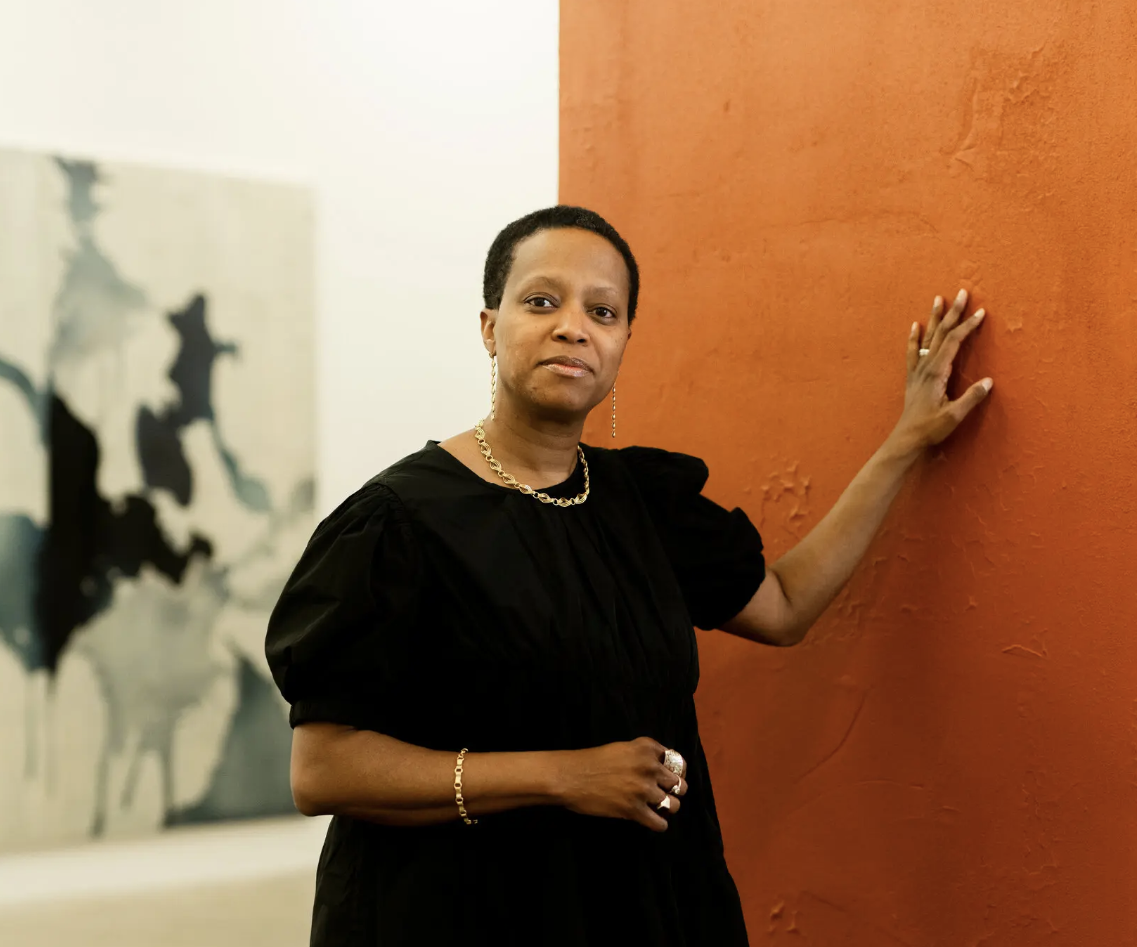Casey Kaplan

With 100 Pounds of Blue Pigment, an Artist Conjures Spirits of the Past
By Elly Fishman | March 15, 2025
Standing in her studio on the South Side of Chicago earlier this winter, the abstract painter and architect Amanda Williams was surprised by a dark blue form that filled the earth-toned canvas, which she had poured with paint the day before. Williams’s process is precise yet fluid; she knows just where the paint should hit the canvas but surrenders to its diffusion. To her, the spectral figure — a body, hunched and bent — that manifested eerily overnight sprang not just from the paint, but from the very soil the paint was made from — Alabama iron-rich soil Williams had her cousin ship in buckets via Fed-Ex. And to Williams, the image was unshakable.
Encountering that form, Williams said, felt like conjuring spirits of the past. “It was like, Oh my God, there they are. They’re coming back. We brought them back.”
That first (amicably) haunted work is one of 20 new paintings and 10 collages that Williams presents in her current show, “Run Together and Look Ugly After the First Rain,” at Casey Kaplan Gallery in Chelsea, through April 26.The painting, “She May Well Have Invented Herself,” like all the work in the show, centers on a deep, midnight blue. It’s a pigment that took Williams, together with two material science labs, three years to develop. Or, rather, to recreate.
The blue originated in the workshop ofGeorge Washington Carver, the Tuskegee food scientist known mainly for his research on peanuts. Carver was an amateur painter who developed and patented his own pigments, including a Prussian blue, from the Alabama soil Black farmers worked at the turn of the 20th century.
Williams first came across a reference to Carver’s Prussian blue while researching Black inventors’ patents for her 2021 multimedia installation on Black ingenuity in “Reconstructions: Architecture and Blackness in America,” a group exhibition at the Museum of Modern Art. “He was on one of these lists of Black inventors,” Williams recalled. “At first I didn’t pay attention because I thought it would be something with peanuts, but when I looked again, I saw it said blue.” In fact, Carver’s 1927 patent described refining red clay soil into paint and dye.
After working on several other projects, Williams returned to the patent in 2022. “It all started with a simple, innocent question: what would it take to recreate Carver’s blue?” she said. Williams quickly realized that bringing the idea to life on her own would be exceedingly difficult. “The patent is extremely vague. It’s just clear enough so you know Carver knows what he’s doing, but not clear enough to follow a cooking recipe.” Also, Williams added, “I’m not a chemist.”
Photo by Elias Williams for the New York Times